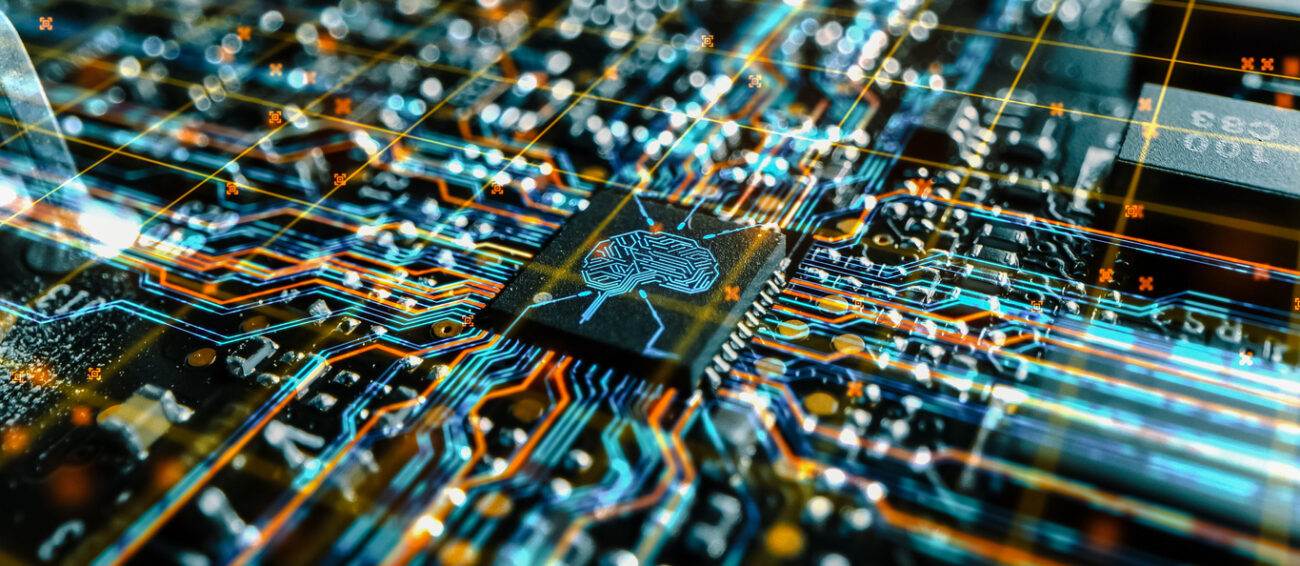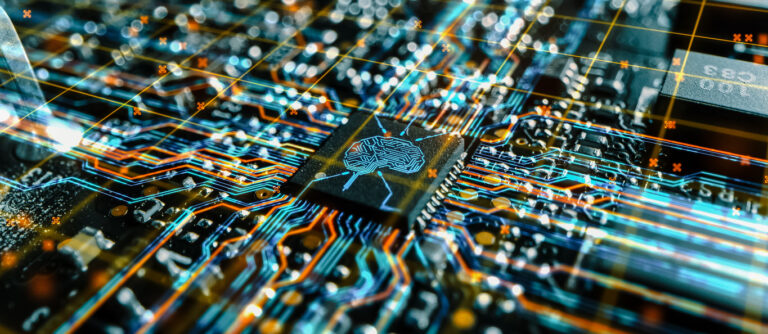Following our AI in the Workplace event last month (May), our guest speaker, Dr Richard Whittle, University Fellow, University of Salford Business School, takes a closer look at AI and the future of work, looking at the uncertainty that exists, as well as the potential. Read more here…
AI and the Future of Work: A landscape of uncertainty
I doubt it is an exaggeration to say that virtually every time you look at the news, your socials or LinkedIn you see another story about Artificial Intelligence (AI). The subject is everywhere and headlines range between an AI utopia of less work and increased productivity, and the AI dystopia of science fiction nightmares. The AI of today is a long way from either extreme; however, it is fast becoming a feature of modern work and life.
You are hearing about AI everywhere you turn, as over the last 18months or so – in waves of increasing sophistication – a new type of AI is producing human realistic outputs in a manner which is both highly accessible and relatively inexpensive. Text, code, images and more can be produced quickly, cheaply and by anyone.
This is Generative AI (GAI) and we will talk more about this later. We will be mostly talking about ChatGPT which many of you will have heard about and may be using, but I should note impartially that there are other models with similar capabilities.
In order to get to grips with the implications of this new technology we must briefly mention the history of AI, this helps us to think about what this technology actually means for us and put the hype into context.
A Brief History of AI: Booms, Busts, and the Path to Today
The journey of AI is a fascinating tale of ambition and unpredictability. Since its inception in the 1950s, AI has experienced periods of significant hype, known as AI booms, followed by phases of disillusionment and stagnation, termed AI winters. These cycles were characterised by overpromises and unmet expectations, as researchers and technologists grappled with the complexities of replicating human intelligence.
This latest boom is marked by tangible breakthroughs that have brought AI out of the lab and into everyday applications, from chatbots to creative content generation. However, history teaches us to approach these advancements with a balanced perspective, mindful of both the potential and the limitations of AI. In recent years, we’ve witnessed a resurgence in AI, fuelled by advancements in machine learning, deep learning, and, notably, generative AI. Here I will borrow a definition from the Turing Institute’s fascinating Generative AI lecture series.
Generative = Create new content.
AI = Automatically with a computer program.
I tend to be cynical of ‘this time is different’ positions, however the accessibility and quality of generated output means that economies, markets and institutions will need to adapt to the ease at which some outputs can now be produced as well as consider the implications of these tools on processes and products. For me, the best way to think about this is in terms of radical uncertainty.
Radical Uncertainty in the Age of AI
The rapid development of AI technologies has plunged us into an era of radical uncertainty. The Resolution Foundation consider that AI “is unknowable in a way that rules out even envisaging some of the possible outcomes, and provides no sensible basis for attaching probabilities to any of them”. Unlike the risks we encounter in traditional scenarios, where probabilities can be assessed and managed, the impacts of AI on the future of work are far more elusive. This radical uncertainty stems from our inability to foresee the full scope of AI’s influence on job markets, economic structures, and societal norms. In short, how do we plan for something we cannot imagine?
Predicting the exact trajectory of AI’s impact on work is challenging. Will AI lead to massive job displacement or create new categories of employment? How will different sectors adapt to the integration of AI? These questions remain open-ended, and our current understanding provides only a glimpse into the possible futures shaped by AI.
Uncertainty is a better way to think about AI, rather than to think about it in terms of risk. Risk is knowable, we can put likelihood and chances onto outcomes, uncertainty doesn’t allow us the luxury of that.
Organisations, policy makers and individuals need to attempt to turn uncertainty into risk in order to plan for ‘the age of AI’. This will allow people to take appropriate risk with incorporating Artificial Intelligence.
You will note that I said appropriate rather than low risk, the potential reward and disruption of AI is great, and purposely low risk adoption may not be possible. The challenge with AI is that its rapid evolution and diverse applications introduce unprecedented levels of uncertainty. Acknowledging this uncertainty is the first step toward developing strategies that can adapt to the unpredictable nature of AI’s future.
As organisations contemplate the integration of AI, they face a paradoxical dilemma: incorporating AI carries inherent risks, yet failing to adopt AI is equally perilous. Embracing AI could lead to operational efficiencies, innovative products, and competitive advantages. However, it also brings challenges such as job displacement, ethical concerns, and security vulnerabilities. Not embracing AI may however lead to falling behind competitors and consumer expectations.
Disruption in the World of Work
Generative AI is poised to be particularly disruptive in various sectors. In creative industries, AI tools can generate content, design graphics, and even compose music, challenging traditional roles and workflows. In finance, AI algorithms are streamlining processes, analysing vast datasets, and making real-time decisions that previously required human intervention. Digital twins allow us to test new products costlessly and AI product development means the cost of a business trying new things may be virtually nil.
These new technologies generate questions around skills, investment, work and more broadly what type of economy do we want and what will we end up with?
AI could automate repetitive and mundane tasks, allowing humans to focus on more creative, strategic, and interpersonal roles. This shift will necessitate significant upskilling and reskilling of the workforce. Education and training systems must evolve to prepare individuals for jobs in the age of AI, emphasising skills that can be completed by AI rather than compete with it.
Currently though, Generative AI, by automating creative knowledge tasks, is challenging this more traditional view of the role of AI. As X user @AuthorJMac succinctly puts it “I want AI to do my laundry and dishes so that I can do art and writing, not for AI to do my art and writing so that I can do my laundry and dishes.”
Picture credit: gorodenkoff


